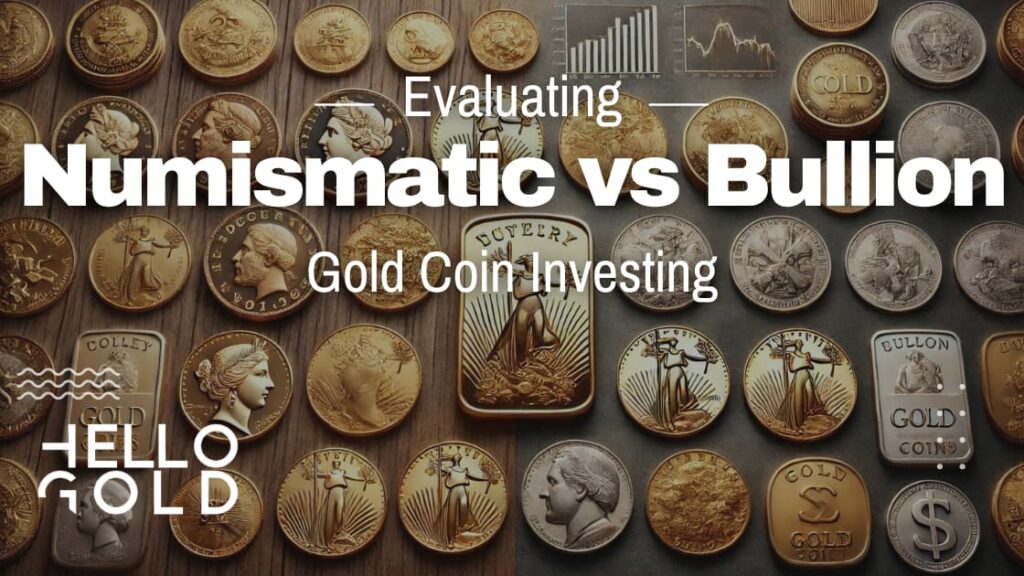Want to add gold to your investments without the trouble of actual gold bars? Gold Exchange-Traded Notes (ETNs) could work. These special financial products let you invest in gold through debt that is tied to how gold does.
Before starting, you need to completely understand what Gold ETNs are, how they work, and if they match your investment aims. This article explains the basics, so you can decide if Gold ETNs should be in your diverse portfolio.
Understanding Gold Exchange-Traded Notes (ETNs)
When you’re looking into different investment options, you might come across Gold Exchange-Traded Notes (ETNs).
But what exactly are Gold ETNs, and how did they start in the market?
Let’s take a close look.
What Are Gold ETNs?
Gold ETNs are debt securities issued by financial institutions that promise to pay a return based on how well an underlying gold index does.
Unlike actual gold or gold ETFs, ETNs don’t give you ownership of real gold. Instead, they’re a promise from the issuer to pay you based on changes in gold prices.
Here’s the key point: the value of Gold ETNs depends on the creditworthiness of the institution that issues them.
This means that even if gold prices go up a lot, your returns depend on the financial health of the issuer. If the issuer were to default, you could be left with nothing, no matter how well gold does.
It’s an important thing to remember when investing in gold.
But it’s not all bad. Gold ETNs have some good points:
- They’re easy to trade: You can buy and sell Gold ETNs just like stocks on major exchanges.
- No storage worries: Unlike real gold, there’s no need to worry about keeping it safe or getting insurance.
- Potential tax benefits: In some places, Gold ETNs might have better tax treatment compared to other gold investments.
However, it’s important to know that Gold ETNs come with their own risks, not just the risk of the issuer defaulting.
Changes in the market can really affect ETN prices, and there’s always the chance for tracking errors between the ETN and the gold index it’s based on.
Liquidity can also be a problem, especially for less popular ETNs.
The Evolution of Gold ETNs in the Market
The story of Gold ETNs is about innovation meeting what investors want.
These instruments were created to meet the growing demand for new ways to invest in gold.
As old investment vehicles struggled to keep up with changing market conditions, Gold ETNs appeared as a flexible and accessible option.
Since they first came out, the popularity of Gold ETNs has grown fast. Investors, who are getting smarter and want to diversify their portfolios, have started to use these instruments as a way to add gold to their investments without the hassle of owning real gold.
Some big events in the history of Gold ETNs include:
- When they were first launched and quickly taken up by professional investors
- The introduction of leveraged and inverse Gold ETNs
- Changes to improve transparency and liquidity based on early concerns
- Growing acceptance by regular investors as understanding of the product grew
The development of Gold ETNs hasn’t been easy. Early products were questioned because of their complexity and the potential for misunderstandings among less experienced investors.
However, as time went on, issuers have worked to make things clearer and educate investors about the details of these instruments.
Today, Gold ETNs play an important role in alternative investments. They offer a unique mix of gold exposure and financial innovation that appeals to many investors.
As with any investment, the key to doing well with Gold ETNs is understanding both their potential and their risks.
The Mechanics of Gold ETNs: A Deep Dive
Gold ETNs are complex financial instruments with unique characteristics.
To make informed investment decisions, you need to understand the intricacies of these products.
Let’s break down the key components that make Gold ETNs work.
Role of the Issuing Financial Institution
The financial institution issuing a Gold ETN plays a crucial role in its performance. This entity is responsible for creating, managing, and ensuring the ETN tracks its intended gold index accurately.
To achieve this, issuers must balance two main tasks: hedging their exposure to gold price movements and being transparent about fees and expenses.
Issuers safeguard against fluctuations in gold’s market value using various techniques, such as futures contracts or other derivatives. This helps them manage risk and maintain a stable financial position.
However, the impact of the issuer’s financial health on ETN performance is a big deal. If the issuer’s credit rating or financial stability declines, it can negatively affect the ETN’s value.
The issuer’s responsibilities also include providing clear information about fees and expenses associated with the ETN. This transparency enables you to make informed decisions about your investment.
Understanding the Underlying Index
The underlying gold index is the foundation of a Gold ETN.
This index is typically based on the spot price of gold, which is the current market price for immediate delivery.
Some indices may use futures prices or a combination of spot and futures prices.
Several factors influence the index value, including:
Global economic conditions: Economic uncertainty often drives investors towards gold, pushing up its price.
Currency fluctuations: Gold is priced in US dollars, so changes in currency exchange rates can affect its value.
Supply and demand: The balance between gold production and consumption impacts its price.
Changes in the index value directly affect the ETN’s pricing. If the index rises, the ETN’s value should increase accordingly, and vice versa.
However, other factors, such as fees and the issuer’s creditworthiness, can also influence the ETN’s performance.
Pricing Dynamics of Gold ETNs
The market price of a Gold ETN is influenced by several factors, including:
- The underlying gold index
- Market demand and supply for the ETN
- The issuer’s creditworthiness
Understanding the premium or discount to the indicative value is also important.
The indicative value represents the ETN’s theoretical value based on the underlying index. However, the market price may differ from this value due to market sentiment, liquidity issues, or trading volumes.
Market makers play a vital role in facilitating ETN trading and pricing. They provide liquidity by continuously buying and selling ETNs, which helps maintain stable prices and ensures that the ETN’s value reflects the underlying index.
Benefits of Gold ETNs for Modern Investors
Precious metal-linked debt securities offer a distinct set of benefits that can enhance your investment strategy. These financial instruments provide a way to track gold’s market performance without the need for physical gold ownership.
Enhanced Portfolio Diversification
Gold ETNs can help you achieve a more diversified portfolio by offering a window into the precious metal’s market performance.
Historically, gold has demonstrated a low or negative correlation with traditional asset classes like stocks and bonds.
This means that when other parts of your portfolio may be underperforming, your Gold ETN investments could potentially offset some of those losses.
To effectively incorporate Gold ETNs into your portfolio, you should consider the following strategies:
- Use Gold ETNs as a hedge against inflation or market volatility
- Allocate a portion of your portfolio to Gold ETNs to reduce overall risk
- Consider investing in Gold ETNs as part of a broader commodities strategy
Potential for Tax Efficiency
Gold ETNs can offer tax benefits that may not be available with other forms of gold investment. In some places, the gains from Gold ETNs may be taxed more favorably than those from physical metal holdings or traditional gold-based securities.
To maximize the tax efficiency of your Gold ETN investments, it’s advisable to implement the following strategies:
- Hold your Gold ETNs in tax-advantaged accounts like IRAs or 401(k)s
- Explore options for Gold ETNs that are designed to track the price of gold, rather than physically holding gold
- Consult with a tax professional to understand the specific tax implications of Gold ETNs in your area
Leveraged and Inverse Gold ETNs
Specialized Gold ETNs, such as leveraged and inverse ETNs, offer unique opportunities to capitalize on gold price movements.
Leveraged Gold ETNs use financial derivatives to amplify the daily returns of gold, often by a factor of 2x or 3x.
Inverse Gold ETNs, on the other hand, are designed to move in the opposite direction of gold prices.
These specialized ETNs can be useful tools for experienced investors who are looking to take a more active approach to managing their portfolios. However, they also come with significant risks, including the potential for rapid and substantial losses.
To effectively use gold-linked products offering magnified or contrary market exposure, you should carefully consider the following factors:
- Your overall investment goals and risk tolerance
- The potential benefits and risks of these specialized ETNs
- The suitability of these ETNs for your specific investment strategy and market conditions
Comprehensive Risk Analysis of Gold ETNs
Gold Exchange-Traded Notes have become popular, offering a way to invest in gold without owning it directly. However, ETNs come with risks that you must consider carefully.
Credit Risk: A Closer Look
Credit risk is a main concern when investing in Gold ETNs.
Unlike tangible bullion or gold-backed securities, ETNs are debt obligations issued by financial institutions.
This means the issuing institution’s fiscal stability directly impacts the value and security of your investment.
You risk that the issuer may default on their obligations, leaving you with significant losses. Past instances of ETN issuer defaults or closures show how important it is to assess an issuer’s creditworthiness before investing.
To reduce credit risk, you should:
- Diversify across multiple ETN issuers to spread your exposure
- Regularly monitor the financial health and credit ratings of ETN issuers
- Consider credit default swaps or other hedging strategies for large ETN positions
Market Volatility and Its Impact
Gold ETNs can experience high volatility compared to physical gold or even gold mining stocks. This volatility comes from factors like leverage, daily rebalancing, and market sentiment.
You must understand how gold price changes affect ETN values and be aware of potential market stress scenarios. Comparing the volatility of Gold ETNs, physical gold, and gold mining stocks shows that ETNs can be more volatile.
To manage volatility risk, you can:
- Implement stop-loss orders to limit potential losses
- Use options strategies to protect against extreme price movements
- Regularly rebalance your portfolio to maintain your desired gold exposure
Liquidity Risk and Trading Considerations
Liquidity risk in Gold ETNs can show up in several ways, including wide bid-ask spreads, limited market depth, and premiums or discounts to net asset value.
You risk overpaying or illiquidity when trading ETNs, especially during market stress scenarios. Factors affecting the liquidity of Gold ETNs include market demand, trading volumes, and the overall market environment.
To minimize liquidity risk, you should:
- Focus on ETNs with high trading volumes and narrow bid-ask spreads
- Use limit orders rather than market orders to control your execution price
- Be cautious about trading during periods of market stress when liquidity may be reduced
Tax Implications of Gold ETNs: A Detailed Examination
Gold-linked debt securities are a popular avenue for gold exposure, but they have some unique tax issues. You need to understand how these investments are taxed to get the most out of them.
Current Tax Treatment of Gold ETNs
For tax purposes, Gold ETNs are considered prepaid forward contracts. This sets them apart from physical gold or Gold ETFs.
The gains from selling Gold ETNs are usually treated as capital gains or losses. This treatment can be good, especially for long-term investors.
If you hold a Gold ETN for more than a year, any gains are subject to long-term capital gains rates, which are usually lower than short-term rates or ordinary income tax rates.
The tax treatment of Gold ETNs is different from physical gold, which is taxed as a collectible at potentially higher rates.
Gold ETFs, in contrast, follow a taxation model similar to stocks, with potential dividend distributions contributing to taxable income.
It’s important to understand these differences to make informed investment decisions.
Reporting Gold ETN Investments on Your Taxes
You need to accurately report Gold ETN transactions on your taxes to avoid potential issues with the tax authorities. To report Gold ETN investments, follow these steps:
- Record all transactions carefully. Keep detailed records of purchase and sale dates, prices, and quantities. This information is the basis for calculating your gains or losses.
- Calculate your gains or losses. Subtract your purchase price (plus any transaction fees) from your selling price or maturity value. This calculation will determine if you have a capital gain or loss.
- Classify your gains or losses. Determine if they’re short-term (held for one year or less) or long-term (held for more than one year). This classification affects the tax rate applied to your gains.
- Report on the appropriate tax forms. In the U.S., you’ll typically report capital gains and losses from Gold ETNs on Schedule D of Form 1040.
Common mistakes to avoid include incorrect classification of short-term gains as long-term gains, which can lead to underpayment of taxes, and failing to report all transactions. Remember, even if you didn’t receive a 1099 form from your broker, you’re still responsible for reporting all taxable transactions.
Tax Planning Strategies for Gold ETN Investors
To maximize your after-tax returns on Gold ETNs, consider implementing the following strategies:
Techniques for boosting the tax efficiency of Gold ETN investments include maintaining ownership beyond the 12-month mark to qualify for more favorable tax treatment on extended holdings.
You can also incorporate these gold-backed securities into retirement savings vehicles with tax benefits to postpone taxation on profits until funds are withdrawn.
Additionally, tax loss harvesting can help offset gains in your portfolio. By carefully managing your Gold ETN positions alongside other investments, you can potentially reduce your overall tax liability.
The length of time you hold Gold ETNs significantly affects how the gains are taxed.
The longer you hold them, the lower the tax rates may be, potentially enhancing your after-tax returns.
However, this needs to be balanced against your investment goals and market conditions.
Considerations for including Gold ETNs in retirement accounts are also important. By incorporating these gold-linked securities into tax-sheltered portfolios, you can delay taxes on gains until withdrawal, allowing your investment to grow tax-free in the meantime.
The holding period has a big impact on how Gold ETN gains are taxed.
As mentioned earlier, holding Gold ETNs beyond a twelve-month timeframe can qualify you for reduced tax rates on your profits.
However, this advantage should be considered in light of your financial objectives and current market trends.
Comprehensive Review of Major Gold ETNs in the Market
Gold-linked debt securities have become more popular among investors looking to get exposure to gold prices.
With various products available, it’s important to understand the specific features and risks of each one.
In this section, we’ll take a closer look at major Gold ETNs, including their underlying indexes, expense ratios, and investment strategies.
Credit Suisse X-Links Gold Shares Covered Call ETN (GLDI)
GLDI presents an innovative approach to gold investment by combining gold price exposure with a covered call strategy.
This ETN tracks the Credit Suisse NASDAQ Gold FLOWS 103 Index, which aims to outperform the market value of physical gold by writing (or selling) covered calls on part of the underlying gold portfolio.
The covered call strategy helps reduce some of the downside risk, making GLDI generally less risky compared to other commodity-focused ETNs.
One key feature of GLDI is its distribution structure. Unlike many ETNs that don’t offer regular payouts, GLDI provides monthly distributions with a forward dividend yield of about 9.82%.
However, these distributions are not guaranteed and can change based on market conditions and the performance of the underlying strategy.
GLDI comes with an expense ratio of 0.65%, which covers management and operational costs. While this fee is higher than some plain-vanilla gold ETFs, it reflects the added complexity of the covered call strategy.
iPath Gold ETN (GBUG)
GBUG tracks the Barclays Gold 3 Month Index Total Return, giving you access to gold futures contracts. This ETN offers a straightforward way to participate in gold market fluctuations without having to hold physical gold or manage futures contracts directly.
GBUG can be an attractive option for investors seeking a straightforward avenue to gain exposure to gold futures. But it’s crucial to understand the risks that come with futures-based products, including potential volatility and the impact of contango or backwardation in the futures market.
UBS ETRACS CMCI Gold Total Return ETN (UBG)
UBG tracks the UBS Bloomberg CMCI Gold Total Return Index, which provides exposure to gold futures contracts across different maturities. This index is designed to offer a more diversified approach to gold futures investing compared to single-maturity products.
UBG’s multi-maturity approach can help reduce some of the potential pitfalls associated with rolling futures contracts, like negative roll yield in contango markets. But it’s important to note that this strategy doesn’t eliminate these risks entirely.
VelocityShares 3x Long Gold ETN (UGLD)
UGLD aims to provide triple leveraged exposure to gold prices. This means it’s designed to deliver three times the daily performance of its underlying gold index, whether positive or negative.
UGLD is primarily meant for short-term trading rather than holding onto for a long time.
The daily reset of leverage can lead to significant tracking error over extended periods, especially in volatile markets.
This ETN carries substantial risk because it’s leveraged, and even small gold price movements can result in amplified gains or losses.
VelocityShares 3x Inverse Gold ETN (DGLD)
DGLD is designed to provide triple leveraged inverse exposure to gold prices, mirroring the inverse of gold’s price fluctuations. Like UGLD, DGLD is tailored for quick-turn market plays and carries significant risks.
DGLD can be used by traders looking to hedge against falling gold prices or to bet on short-term declines in the gold market. But the inverse leverage means it carries a high risk of substantial losses, especially in volatile markets.
Bottom Line
Gold ETNs allow you to invest in gold without purchasing actual metal. They provide easy trading and possible tax perks, but also come with risks like issuers defaulting on payments or big changes in value.
To decide if Gold ETNs fit for you, research the different options and fees. See how they align with your money goals and comfort with risk.
For personalized tips on adding Gold ETNs to your investments, consult a financial advisor. Take action now to check out if Gold ETNs can improve your investment plan.










